-
 Chen Si
Hi there! Welcome to my shop. Let me know if you have any questions.
Chen Si
Hi there! Welcome to my shop. Let me know if you have any questions.
Your message has exceeded the limit.

Exploring What Are the Four Main Types of Sensors Used in Everyday Devices
2025-10-20 15:48:25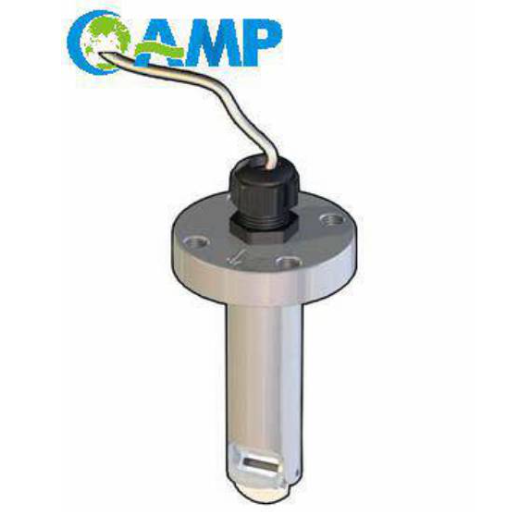
These days, sensors have become all-important daily applications, embedded into whatever goes on in making a device useful and efficient. From the pair of phones you carry around in your pockets to any smart home solution that makes everyday life simpler, sensors gather, analyze, and react to data, more often in silence behind the scenes. What actually makes sensors so important, and thus give power to the technology we are using? This article discusses the four primary sensor categories frequently employed in daily-use gadgets. An understanding of their roles would lead to an appreciation of these invisible mechanisms tenting an ever more connected world around us. Get set to know the gadgets facilitating modern convenience!
Introduction to Sensors
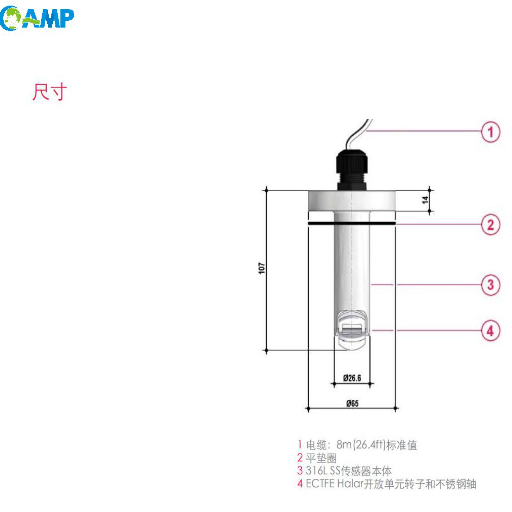
Definition and Importance of Sensors
Sensors are designed to detect and respond to physical stimuli like light, temperature, pressure, motion, or any other environmental change. They stand at the heart of linking the physical and digital worlds, transforming a given stimulus into an electrical signal that can be measured, analyzed, or acted upon. What makes the sensors important are their ability to effect automation, monitor things in real time, and help with better decision-making across industries. From sensors on wearable-via a fitness tracker-to measuring heart rate-to smart sensors for temperature control of a home-the synonymous sensors provide efficiencies, security, and convenience. Their entrance into modern technology is a critical factor in driving innovation and shaping the present-day interaction between people and the physical environment.
How Sensors Work in Everyday Devices
Sensors work by detecting physical, chemical, or environmental variations and converting these changes into measurable signals. For example, a temperature sensor could implant a voltage value subjected to changes because of thermal energy, while a motion sensor captures movements in its environment by means of infrared or ultrasonic technology. Those signals can then be processed by microcontrollers within devices to initiate actions or generate feedback. For example, accelerometers detect orientation changes in smartphones and change the screen orientation accordingly. Proximity sensors turn off the touchscreen if the phone is lifted to one's face during a call. Thanks to the precise and accurate input from a sensor, countless everyday devices perform better and have a more seamless user experience.
Overview of Different Types of Sensors
In the blossoming era for modern technology, sensors offer infinite opportunities and array of types designed to measure or interact with different environmental or physical phenomena. Hence the common types:
Temperature Sensors: Measuring changes in temperature for many applications, industrial and household types, ranging from a thermostat to an oven, these enable one to keep an eye on the system and make adjustments accordingly with the changes.
Light Sensors: Light sensors usually detect the ambient level of light to auto-dim or brighten a computer screen or mobile phone display or to tweak the camera exposure settings to suit the present lighting conditions. They also find application in automatic street lightings.
Motion Sensors: Motion sensors come into play in security systems and gaming devices and enable smart lighting to react to user convenience and safety.
Pressure Sensors: Pressure sensors are used for force or pressure measurement and find applications in automotive systems, medical devices such as ventilators, and machinery to keep everything under accurate control and monitoring.
Gas Sensors: Gas sensors measure the quantity of harmful gases in the atmosphere. They find crucial applications such as in mining, industrial manufacturing, and residential monitoring for safety.
Magnetic Sensors: Magnetic sensors detect changes in the magnetic field and are used in navigation systems, mobile devices, and industrial machinery to assist in applications like compass calibration and metal detection.
The brilliance of sensors lets their application benefit various disciplines, giving
Main Types of Sensors
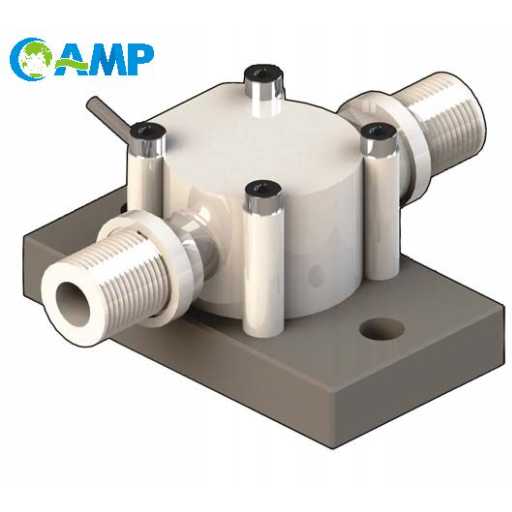
Temperature Sensors: Functions and Applications
Temperature sensors measure and monitor temperature in various environments and systems. These sensors work by sensing temperature changes and converting the information into electrical signals or digital data for readings. These sensors include thermocouples, resistance temperature detectors (RTDs), thermistors, and infrared sensors; each has special characteristics suited for special applications.
Temperature sensors find their application in many temperature measurements of various industries such as healthcare, automotive, manufacturing, and environmental monitoring. A classic medical example consists of one set of temperature measuring devices, including digital thermometers and incubators, which require extremely precise temperature control. In automotive systems, temperature sensors are used in engine control, climate systems, and battery management. Temperature sensor development has brought about better performance, higher temperature accuracy, and better integration with IoT-enabled systems to monitor temperature in real time, improving operational efficiency across industries.
Proximity Sensors and Their Types
Used widely, proximity sensors detect the presence or absence of objects nearby without ever coming into contact with them. The sensors vary from inductive, capacitive, ultrasonic, and optical based on the working principles.
Inductive proximity sensors find their use in metal detection; they operate with electromagnetic fields. On the other hand, capacitors can detect metallic and nonmetallic bodies and thus have application areas such as liquid level detection or plastic component detection. Ultrasonic proximity uses sound wave energy to measure distance and is best for detecting objects, regardless of their material, provided they are dense enough to reflect sound. Optical proximity detection works on light, either infrared or laser, to locate objects or measure distances with great precision.
Proximity sensors practically find applications in every industry. These are highly used within manufacturing and automation systems for positioning objects on conveyors and safety monitoring. These sensors in automotive systems serve as parking assist and collision avoidance. Moreover, proximity sensors are embedded in consumer electronics to turn off the screen of a smartphone while on a call. Developing further, the proximity sensor technology then guarantees the sensor to be more responsive, durable, and adaptable for sectors.
Pressure Sensors: The Principles of Operation
Pressure sensors convert the force exerted on them by a fluid or gas into an electronic signal that is measured and analyzed. The transformation is generally done through the sensing element, such as a diaphragm, deforms under the application of pressure. The deformation is detected by one or more means, such as piezoelectric, capacitance, or resistive operation, depending on the sensor type: piezoelectric sensors, for instance, produce an electrical charge proportional to the pressure exerted, whereas capacitive sensors sense the change of capacitance due to diaphragm movement. Today, pressure sensors are highly accurate and reliable, employed for applications ranging from tire pressure monitoring systems in automotive industries to medical devices for a ventilator and blood pressure monitor. With their present-day versatile applications and ongoing advancements in MEMS (microelectromechanical systems), pressure sensor functionality is continually being enhanced across industrial sectors.
Ultrasonic Sensors: Working Principle and Applications
The operation of ultrasonic sensors involves emitting high-frequency sound waves, generally considered beyond human hearing, and measuring how long it takes for the sound to reflect back from an object. The returned time-of-flight information is used to estimate the distance between the sensor and the object with very high accuracy. The look of an ultrasonic sensor can be broken down into two components: an ultrasonic wave generator or transmitter that transmits waves, and a receiver to receive the reflected waves.
These applications encompass a multitude of sectors like industrial manufacturing, robotics, and healthcare. For instance, ultrasonic sensors in manufacturing are used for level measurement, distance sensing, and material evaluation, thus attaining precision and quality control. In robotics, ultrasonic sensors detect obstacles to navigate around them and thus operate autonomously. In the healthcare domain, diagnostic imaging carries a vital role through ultrasound techniques that render internal body structures in non-invasive and highly detailed visualization. With continuous developments in sensor technology, the performance of these gadgets keeps getting further refined and new opportunities are being realized in these fields.
Common Applications of Sensors
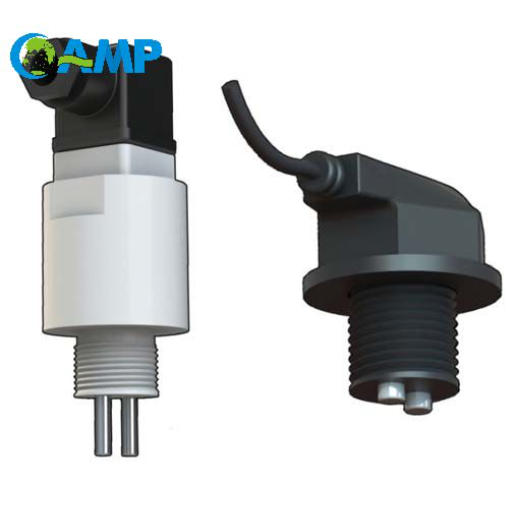
Temperature Sensors in HVAC Systems
Temperature sensors are a key component of any modern HVAC system in day and in operation. These sensors measure the indoor climate and send data to the central controller in case of temperature changes. It thus allows HVAC systems to dynamically heat or cool various areas to maintain a level of comfort while saving energy. The most thorough and modern temperature sensors will reduce energy usage and cost. They also play a major role in the creation of smart thermostats whereby consumers can program how temperature is controlled and set schedules for climate. Pulse with intent on constant sensor innovations that improve accuracy and speed, these sensors are now driving the future of sustainable and eco-friendly HVAC solutions.
Proximity Sensors in Automotive
With the evolution in technology of recent days, safety and automation have found a place within the realm of enhanced vehicle technology. Proximity sensors detect objects near a vehicle without any physical contact, gently using electromagnetic fields, infrared, or ultrasonic signals. Accurate object detection is generally required, so proximity sensors are featured in parking assistance systems, blind spot monitoring, and collision avoidance technologies. Technologies are evolving, improving the accuracy and range of the sensors so better performance can be gleaned from them, even under variable driving conditions. Especially when integrated into autonomous vehicles, they provide safety for navigation, efficiency for traffic management, and better-driving experiences. This field is constantly developing toward ever smarter, more connected vehicles.
Pressure Sensors-Industrial Automation
Industrial automation pressure sensors hold very important functions in ensuring the perfect and exact monitoring of the pressure levels of various applications. These sensors are employed wherever fluid control, pneumatic systems, or hydraulic systems are involved, and an accurate pressure measurement needs to be maintained for purposes of efficiency and safety. With the improvements in the sensor field, pressure sensors nowadays also have higher sensitivities, long-life qualities, or can be integrated into systems, hence adapted for all harsh environments in the industry. They help to increase operational accuracy, reduce downtime, and improve energy efficiency of automated systems and thus respond to the requirement of having smarter and greener industrial solutions.
Ultrasonic Sensors in the World of Robotics
Ultrasonic sensors are one of the most crucial gadgets for modern robotics, facilitating accurate distance measurements and object detections. They achieve this by transmitting high-frequency sound waves towards an object and then listening to the echoes returning from the object's surface. Their non-contact feature makes ultrasonic sensors suitable for object detection in dynamic environments in low visibility conditions. Common applications of ultrasonic sensors include robot autonomic obstacle avoidance, object tracking, and level sensing. Furthermore, ultrasonic sensors provide an extremely high degree of accuracy in distance measurement for a wide range of materials, irrespective of their color, texture, or transparency, thereby becoming undoubtingly one of the supports for complex robotic systems. Through this approach, the integration of ultrasonic technology is further hastening the developments in robotics in terms of efficiency, adaptability, and safety across industries.
List of Sensors and Their Types
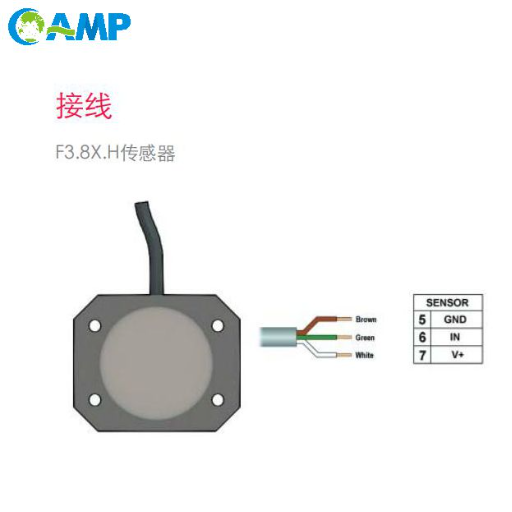
Various Types of Temperature Sensors
Thermocouples:The most widely used sensor that measures temperature based on durability, wide temperature range, and fast response time. The two wires of dissimilar metals will produce a voltage that is indicative of the temperature difference between them. From industrial applications to colder environments such as furnace or engine monitoring, thermocouples are best suited.
Resistance Temperature Detectors (RTDs): RTDs are considered highly accurate and stable. They depend on resistance change in electrical conduction of a substance with temperature, normally platinum. They are best applied to temperature occasions where accurate readings are needed, such as in laboratories or processing plants.
Thermistors: Thermistors are sensitive to temperature changes and find their applications mostly im medical instruments, HVAC, or even household appliances. These sensors, made of ceramic or polymer materials, experience large changes in resistance with the smallest temperature variations, thus allowing precise control at lower temperature ranges.
Infrared Temperature Sensors: These infrared-type sensors are non-contact temperature-measuring instruments utilizing thermal radiation given out by an object. They come in handy when contact measurement would be impossible, such as the temperature measuring of moving parts, molten metals, or in a hazardous environment.
Semiconductor Temperature Sensors: These are compact and inexpensive devices commonly used in consumer electronics. They measure temperature using temperature-dependent properties of semiconductor materials and are hence best suited for integration with microcontrollers in modern-day devices.
Each type of sensor has particular strengths-an implication that each is suited for varying types of industrial, scientific, or everyday applications. Their evolution is therefore an ongoing process with the rise of materials and technologies, further enhancing their precision and versatility.
Different Types of Proximity Sensors
Proximity sensors detect the presence or absence of objects without having any physical contact with an object. According to the detection principles and functioning methods, different types of proximity sensors serve different purposes in different applications.
Inductive Proximity Sensors: These sensors detect metal targets by establishing an electromagnetic field. When a metal object comes in the proximity of this field, it causes a change in the inductance within the sensor and thus the sensor responds. These sensors are very much reliable and are majorly used in manufacturing and automation processes.
Capacitive Proximity Sensors:A capacitive sensor can detect a metallic or non-metallic object by variations in capacitance when an object approaches the sensing surface. The very nature of the sensor makes it capable of working with all applications involving wood, paper, or plastics.
Ultrasonic Proximity Sensors:To determine the position of an object, ultrasonic sensors use high-frequency sound waves. They send pulses of sound, and when these pulses strike an object, they reflect off, allowing the sensor to recognize the object and determine its distance. Generally, ultrasonic proximity sensors see applications in parking sensors and robotic systems. Photoelectric Proximity Sensors:
Photoelectric sensors use either infrared or visible light to identify one. They react to the blocking or reflected light beam. These are often implemented in warehouse automation and packaging lines.
Magnetic proximity sensors: Magnetic sensors detect the presence of a magnetic field generated by a magnet. They are used wherever fine detection is required-interior doors, for example, or interlocks for a safety shutdown.
Coming to proximity sensors, each type has its peculiarities and perks to meet assorted requirements from the industry and technology fields. As sensor technology grows, so goes precision, reliability, and applications.
Other Common Types of Sensors
Temperature Sensors: The temperature sensors are devices crucial for measuring changes in temperature into the environment or object. These sensors include thermocouples, resistance temperature detectors (RTD), and thermistors, each design made for particular applications. From monitoring industrial processes to controlling the thermostat at home, temperature sensors ensure precision thermal management in many industries.
Pressure Sensors: Pressure sensors measure the force exerted by a fluid (liquid or gas) within a system. These are crucial in applications such as measuring pressure in tires, water flow, and industrial machinery safety intervention. Pressure sensor technology is evolving to provide more accuracy and smaller size, now necessary in modern engineering and healthcare devices.
Light sensors find use in systems requiring detection and measurement of the intensity of light. They find application in a number of devices, including smartphones, motion-activated lights, and photovoltaic systems. These sensors convert light into electrical signals that are used for automation, energy efficiency, and inventive application in various fields.
Gas Sensors:Gas sensors sense the presence and concentration of gases in the air to maintain safety and process control. Mostly found in carbon monoxide detectors or in industrial safety applications, gas sensors create awareness among the living of hazardous conditions and maintain air quality in confined spaces.
Vibration Sensors: Vibration sensors and accelerometers really are two names for one device that measures vibration, acceleration, or motion. Such instrumentation is useful in machinery diagnostics, structural health monitoring, and wearable technologies, delivering essential data about performance and safety.
Common examples of sensors illustrate the amazing capabilities modern sensors possess driving innovation and productivity in a multitude of industries.
Future Trends in Sensor Technology
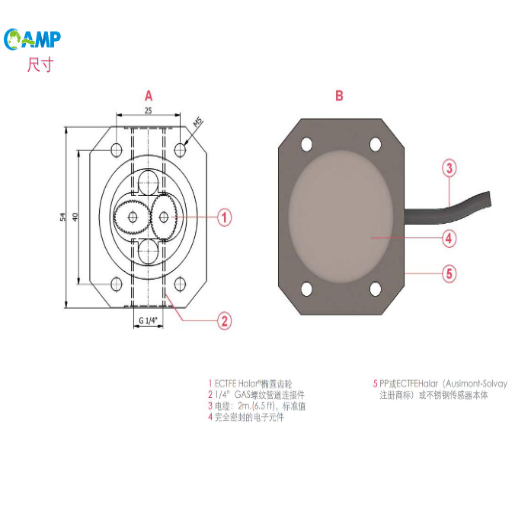
Advancements in Digital Sensors
These developments in digital sensor technologies are, from my point of view, revolutionizing industries through the improvement of precision, connectivity, and real-time processing of data. One major trend pertains to deepening integration of IoT into digital sensors. IoT-controlled sensors hence give devices an ability to communicate among themselves, giving rise to smart systems in industries, such as healthcare, agriculture, and manufacturing. For instance, sensors embedded in wearable devices provide continuous health monitoring, while smart agricultural instruments gather exact data on soil and weather conditions to maximize crop yields.
Miniaturization of sensors without affecting their performance is another major step forward. This trend has facilitated the production of smaller, energy-efficient sensors that are inexpensive to produce and can be embedded in applications such as consumer electronics and autonomous vehicles. An equally important factor that has come into play is using artificial intelligence to optimize sensor data. With AI integration, sensors could be embedded with edge systems to process voluminous information, reduce latency, and set up predictive maintenance in complex machinery.
It was a matter of consideration that, with ever-changing materials science and technology in 5G communications, digital sensors would continue to evolve in the future. Under such realities, speed, accuracy and precision in data transfer possibilities would get enhanced while power consumption would get more and more reduced. Considering such futuristic features, digital sensors are bound to remain crucially placed in technological advancement and hence, their few industries will have to grant it drive for all avenues of innovation as well as brighter aspects of efficiency and standard of living.
The Sensor's Involvement in IoT
An essential role played by sensors in the Internet of Things (IoT) is that they act as the interface between the physical and digital realms. From my point of view, sensors represent the eyes and ears of any IoT application, providing real-time information that forms the basis of decision-making and automation. They collect data about temperature, motion, humidity, pressure, or location and transfer it to the cloud for further analysis. Sensor advances have made for the modern IoT system to be much more precise, efficient, and reliable, and have pushed industries such as health care, agriculture, manufacturing, and smart cities to prosper from increased connectivity and embedded insights.
One important development in the field is the integration of AI with sensors. In consequence, it allows IoT devices not only to collect data but to process and analyze said data at the edge so that responses can be faster and more intelligent. For example, in healthcare, embedded sensors on wearable devices now allow continuous monitoring of vital signs and generate alarms if there are anomalies, hence saving lives at least. In the same vein, in agriculture, IoT sensors can measure soil moisture and weather conditions with high precision, assisting in maximizing crop yields by maintaining the best growing environment.
The aspect that thrills me most about sensors in IoT is their ability to help sustainability and energy efficiency. Having low-power sensors communicate via advanced communication technology such as 5G, the IoT framework can minimize energy waste while attaining maximum performance. To further illustrate, the smart grid-based IoT devices optimize the utilization of electricity in response to real-time demand, cutting down on wastage, and reducing carbon emissions. With sensors growing into more amplified and complex tasks, I envision their role expanding as a key enabler of revolutionary IoT innovations that will, in an altogether new dimension, change industries and enhance lives.
Emerging Sensor Technologies
Emerging sensors, with intricate data detection and integration capabilities, technologically advance IoT. Wearable sensors now measure parameters such as heart rate variability, blood oxygen levels, and biomarkers for stress levels and fatigue with a high degree of accuracy. This has led to innovations in healthcare, where health monitoring in real time and early warning of possible medical conditions have drastically improved on patient outcomes and reduced healthcare costs. Environmental sensors, on the other hand, have stepped up in sophistication in maintaining the quality of air and water so that communities may keep pace with pollution and climate changes adequately.
Edge computing paired with smart sensors is another promising development. Edge-enabled sensors process information much closer to where it is collected, minimizing latency and conserving bandwidth. This application finds its use in autonomous vehicles, where milliseconds matter, and in industrial automation situations that require real-time decision making. Sensors equipped with AI and ML algorithms are now able to detect patterns, predict failures, and self-calibrate, reducing downtime and maintenance costs. These smart systems foster efficiency and innovation throughout manufacturing, agriculture, and smart cities.
In my opinion, the evolution of technology and related applications is an interesting subject. Be it self-sustainable cities with IoT-enabled infrastructure or precision farming with sophisticated sensor technology, we are really just touching the possibilities. These advancements only emphasize how important sensors are for creating a more interconnected, efficient, and sustainable world. I firmly believe that further investments in sensor technology shall yield solutions for some of the greatest challenges that confront us today.
Tags: What are the four main types of sensors?


